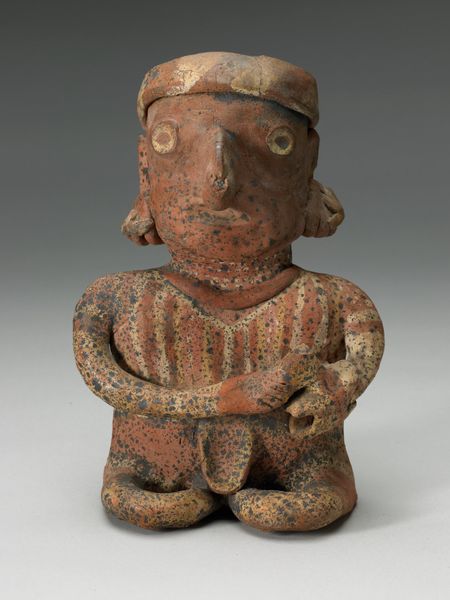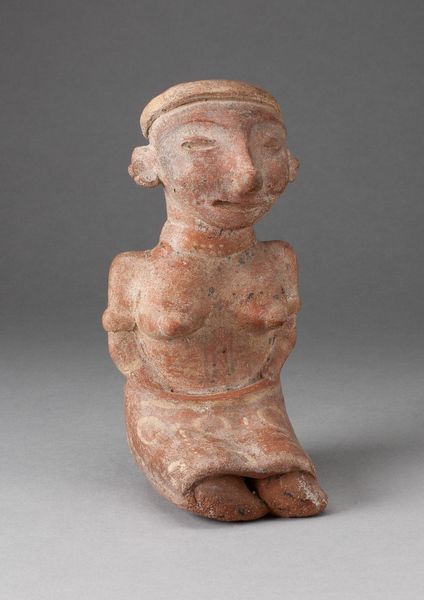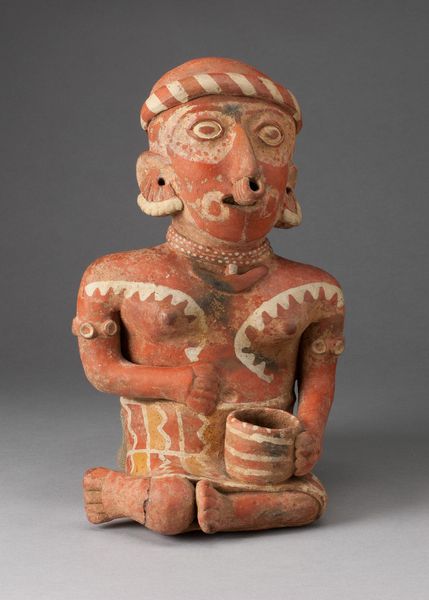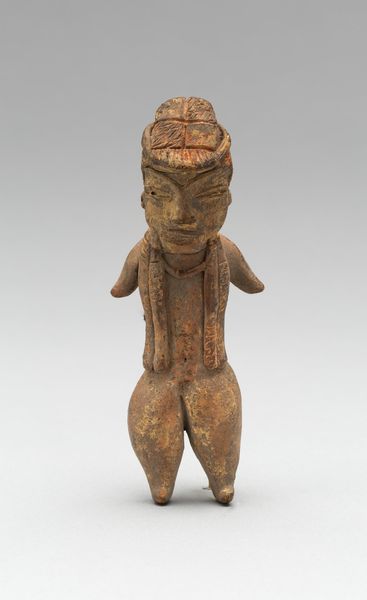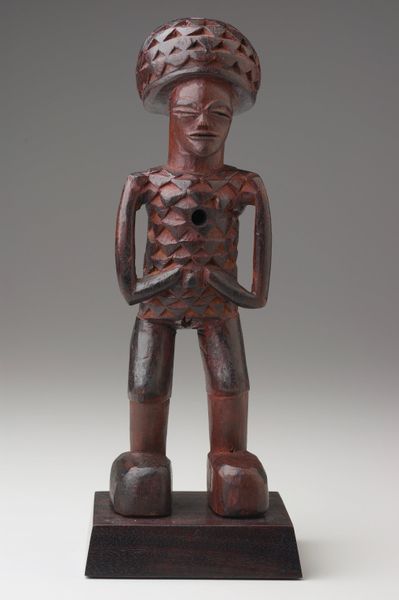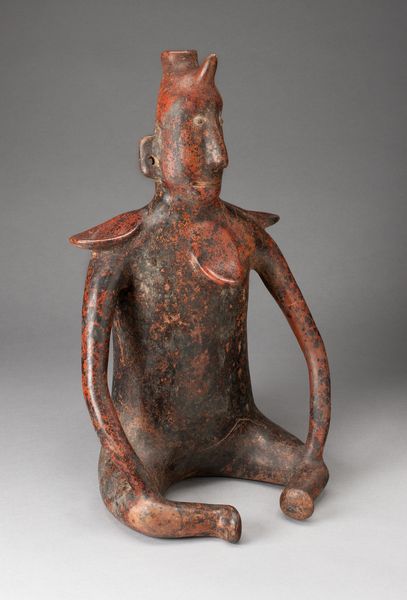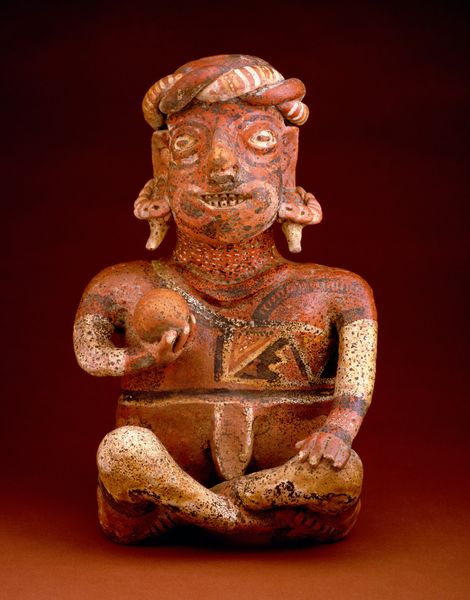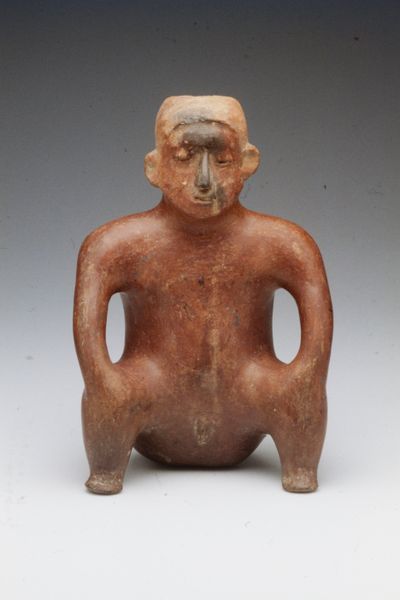
ceramic, sculpture, terracotta
#
portrait
#
ceramic
#
figuration
#
sculpture
#
terracotta
#
indigenous-americas
Dimensions: 6 x 4 x 3 1/4 in. (15.2 x 10.2 x 8.3 cm)
Copyright: Public Domain
Curator: Welcome. We're standing before a ceramic figure, created sometime between 100 and 600 AD by the Nayarit people. It is currently housed here at the Minneapolis Institute of Art. Editor: It has such a solemn presence, wouldn't you say? The earthy color palette, combined with those downward-gazing eyes, gives the sculpture a quiet dignity, almost a melancholic weight. The texture also has a tactile immediacy. Curator: Indeed. These figures were often placed in elaborate shaft tombs in western Mexico, part of complex funerary offerings to accompany the deceased on their journey. We believe that the figure could represent a specific individual, possibly a community leader or ancestor, given its representational form. The rope-like belt cinched around the waist suggests certain societal status or role. Editor: The construction itself intrigues me. Notice the way the artist balances solid forms with negative space. The openings on the headdress add visual levity. And how would you analyze the proportioning; the relatively short arms against a fuller torso? Curator: That contrast adds to the sense of groundedness. As historians, we tend to read stylistic choices like those as culturally meaningful articulations of body image and status, where those perceived visual “disortions" communicate meaning for viewers aware of period semiotics. Also important to the construction are the material considerations—clay being so connected to earth. Editor: Exactly! The raw material, in itself, carries profound cultural associations. Considering your reading of the status of the person depicted, might there be, for example, some implied semiotic relationship between, say, clay and rulership as related here to concepts such as "power"? Curator: I appreciate you asking that. Thinking that there must have been, yes, considering other symbolic attributes we observe, like their ceremonial garb and headgear. It is like they’re merging material earthliness with ceremonial eminence. It underscores the important link between individual identity and community belonging during this period in western Mexico. Editor: An ancient echo speaking volumes today! So while the figure evokes serenity and reverence in me, for you it emphasizes enduring ancestral connections and ancient hierarchies. Curator: That’s right. It just shows the fascinating complexities woven into this captivating artifact! Thank you for helping to unravel these details today.
Comments
No comments
Be the first to comment and join the conversation on the ultimate creative platform.
